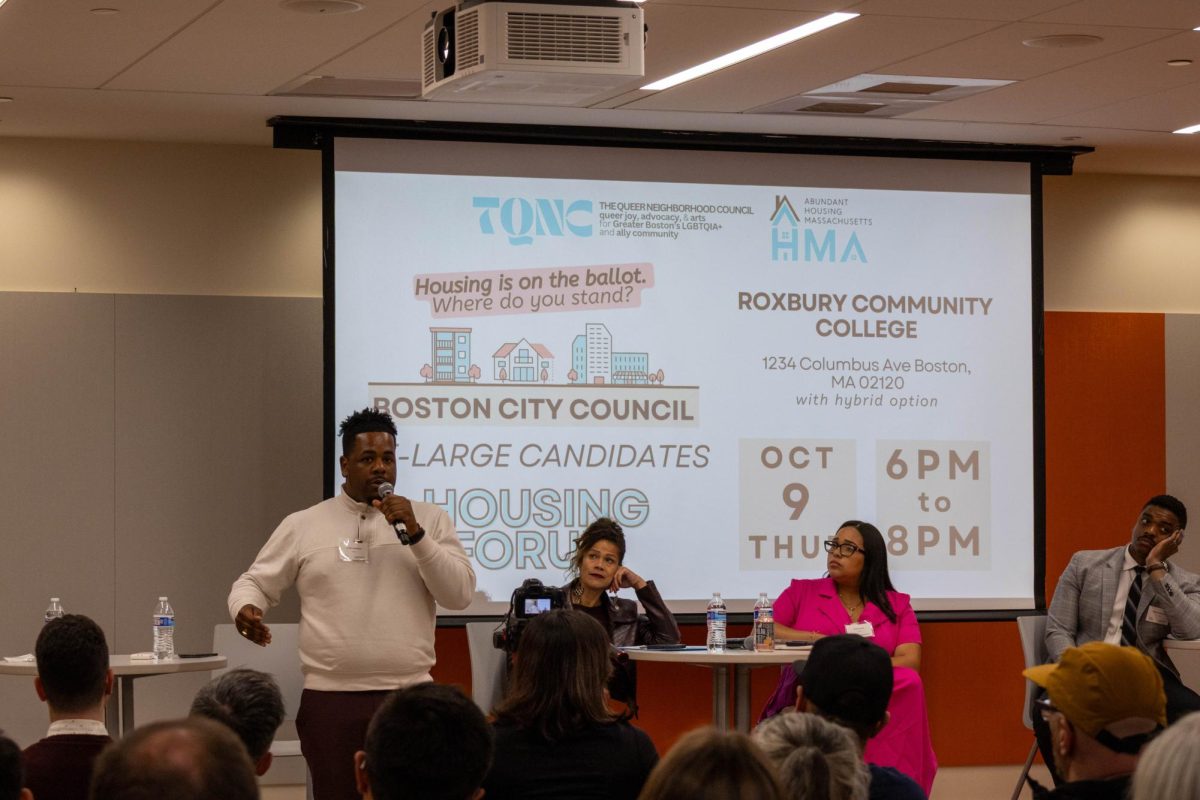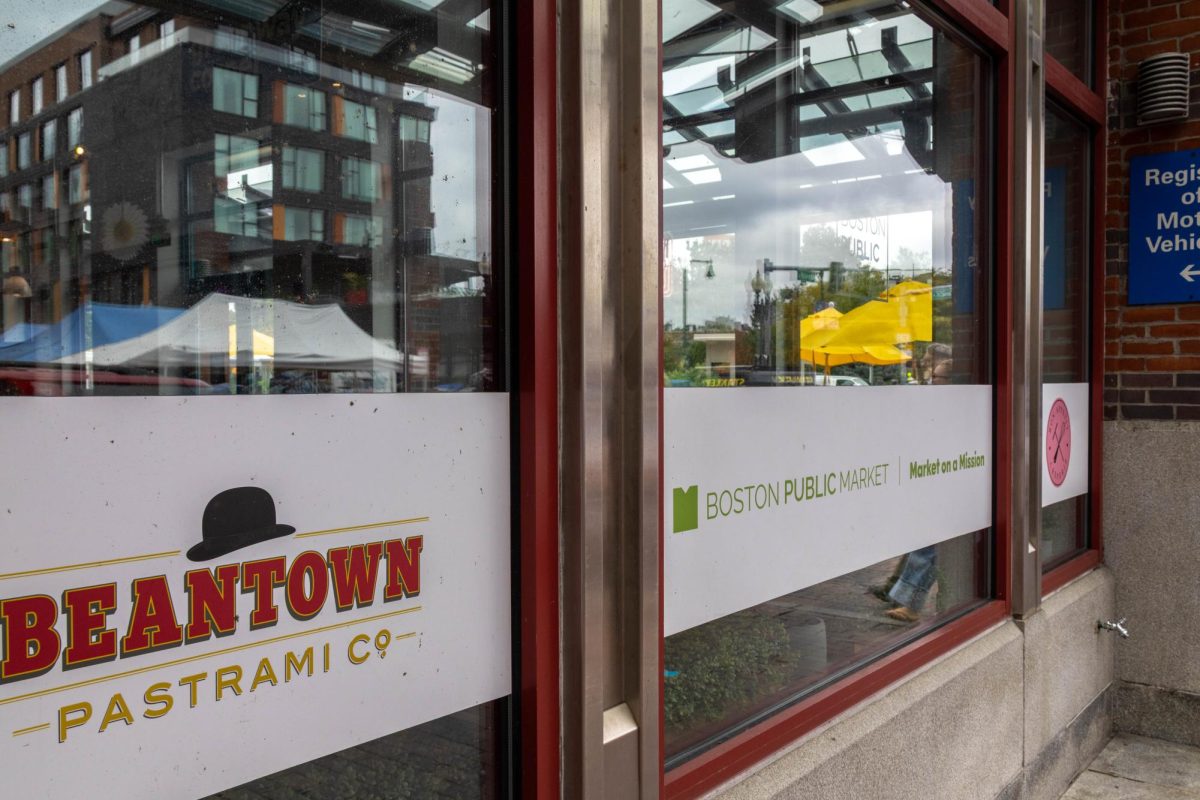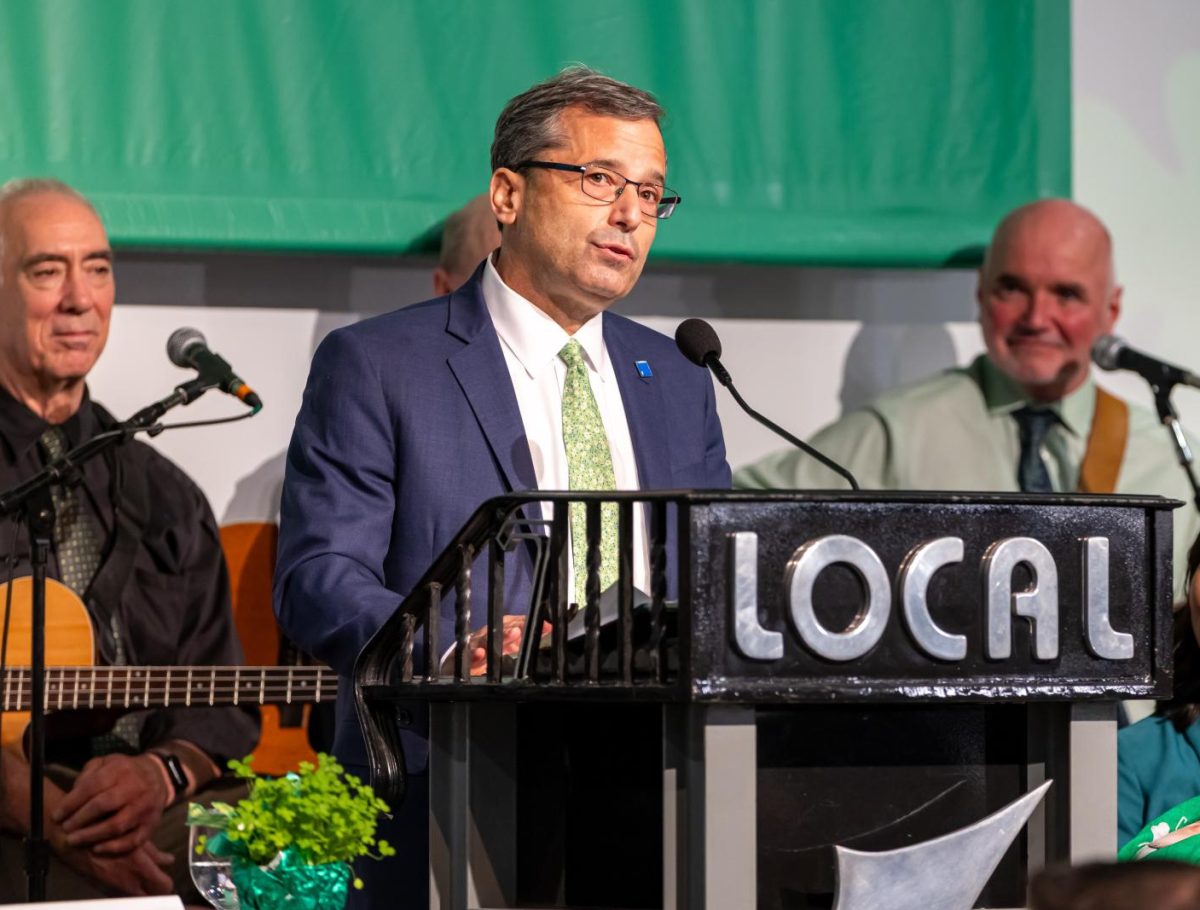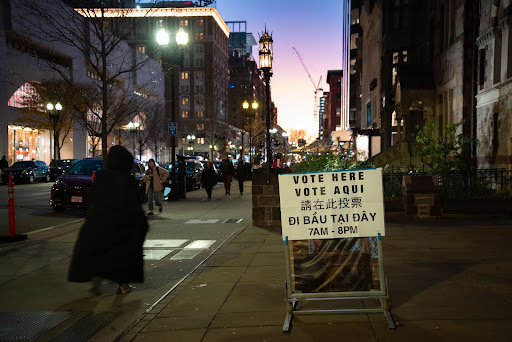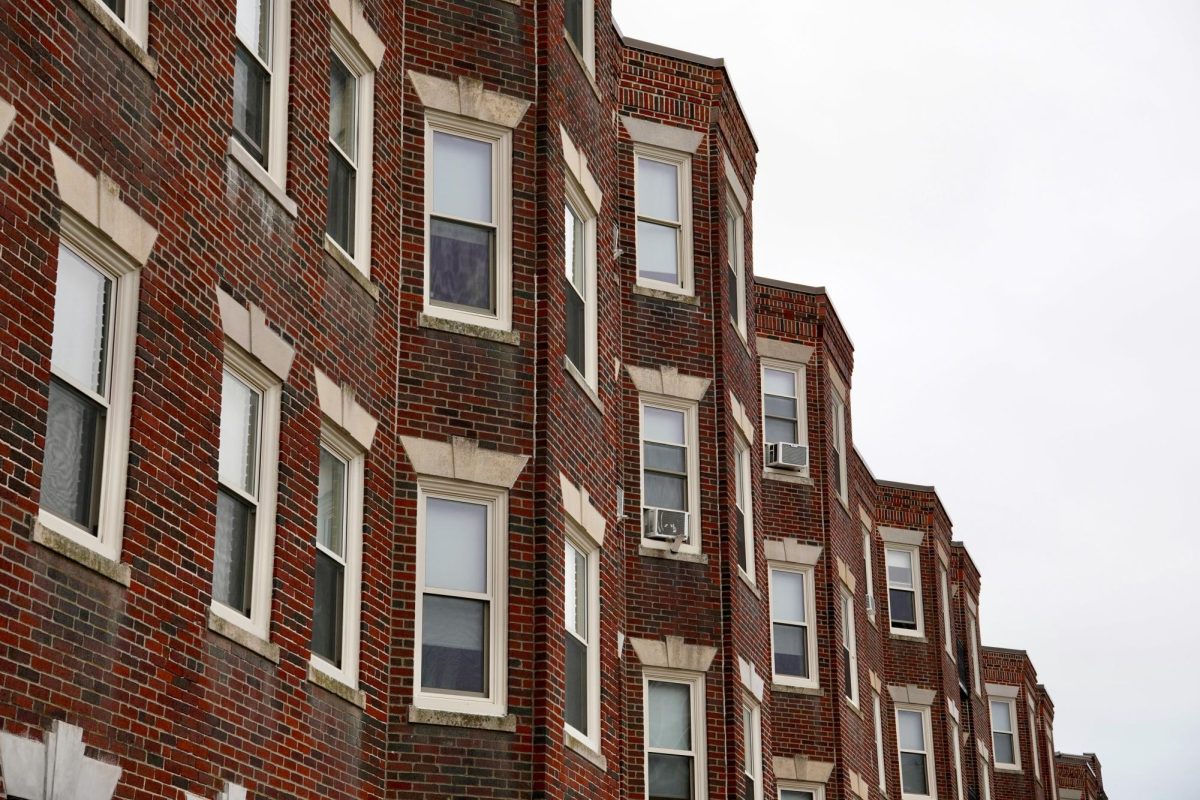The street leading to artist Sophie Pearson’s home studio in Worcester is a rugged drive. Two shoddily-patched seams of cracked asphalt course down the length of the street and, without the obstruction of a curb, grass lawns crawl onto the road. Inside, it’s a full house. A lively German Shepherd guards the door and two cats jostle on the staircase. Pearson wrangles them with docility, reaching for a can of diet Sunkist orange soda before settling into a creaky chair to do something she’s done increasingly more of in recent weeks: Give an interview.
Pearson, who graduated from art school at Lesley University in 2021, has amassed a social media following of over 60,000 on TikTok and 70,000 on Instagram. They come in cycles, journalists and new devotees, scratching at the relative normalcy of her life in central Massachusetts. Every three or four months, a short video of her artwork layered over a viral sound blows up on the platforms, her most famous reaching an audience of as many as 5.9 million people. The likes, comments, and direct messages — some complimentary, effusive, others offering up intimate, unsolicited details of strangers’ own lives in response to Pearson’s art — rush in like a deluge.
“I’m really grateful that there’s people who give me a reason to paint when I sometimes feel like I don’t have one,” Pearson reflected, speaking to The Scope on one rainy morning in March. The online validation reminds Pearson of art school where feedback was constant and constructive, but her objective as a painter was never to taste internet fame.
“I don’t make the artwork I make because it does well on social media. I don’t make it because I want to share it with millions of people,” Pearson said. “I make it because I want to make it, I get these ideas in my head, I get really fixated on them, and then I really want to get them out, and then I do it and I just so happen to also post it on social media.”
The material evidence of Pearson’s own creative restlessness is all around. Her studio is just as much a reflection of her mind as her artwork. Her pieces stand upright in a wooden bookshelf that was a gift from her elderly neighbor. Yellow paint covers the walls; on one of them, a portrait of Pearson made by one of her college professors stares back at the artist. On the opposite wall, she stashes her stickers — two-dollar miniaturizations of her original works including paintings of mermaid Barbie, a Littlest Pet Shop bunny figurine, and the artist’s own blood-shot eye — in a mounted acrylic organizer.
Long before pitching her tent in Worcester, Pearson was a southern kid from North Carolina. When she was six years old, her parents divorced, and sometime between the ages of ten and twelve — her memory is hazy — Pearson moved to Maine with her mom, a New England native. At 18, she enrolled at Lesley University in Cambridge, MA, without much of an attachment to her art major.
“I didn’t know what I was doing when I went to Lesley,” Pearson said.
That is, until she took a class with Amy Sudarsky, a figurative painter who has taught art for more than 35 years. The curriculum required Sudarsky, a lover of oils, to teach acrylic painting. The professor quietly defied the rules by asking students to purchase and work with slow-drying acrylics that would best mimic oil paint. Pearson was hooked.
“The first time I touched oil paint, I was like ‘I love it,’” she recalled. Pearson went on to take oil painting classes with Sudarsky in following semesters and intern with the professor at her studio. It wasn’t until spring of 2020, when the COVID-19 pandemic began and Pearson returned home, that she finally hit her stride with her chosen medium: forgiving oil paints that dry slowly in one layer and leave a smoother finish than water-based paints.
Pearson began by experimenting with self portraits. The first piece in this category — a reproduction of Pearson’s own torso, her waist “Cinched” by an impossibly tight green belt — materialized during the pandemic when, in the privacy of her own home, Pearson felt at liberty to explore herself as the subject of her art.
“It wasn’t until I was home doing all of my work by myself that I started to be a little more free with the content that I was working with. I could do, for instance, nude paintings of myself because I didn’t have a professor looking over my shoulder,” Pearson said.
Inspired by a nude self-portrait of painter Alice Neel that depicts the older artist vulnerable and undoctored, Pearson set up her lighting and pulled the belt tightly around her belly.
“It was never my intention to be so personal with my artwork. For a long time, when I was doing body image related work, I thought ‘I need to go into this niche of body positivity. I need to be this person who uses my skill to make fat people feel more seen,’” she said.
When Pearson attempted to paint herself in happy scenarios, despite what she describes as feelings of discomfort with her body at the time, her art felt inauthentic.
“I didn’t like my body at the time, so making that work was fake and I think people saw that. When I started making the stuff that was more honest about how I felt about myself, that’s when people responded really intensely,” she continued.
Also during her junior year at Lesley, Pearson created her first painting about her childhood. Drawing from a photo reference taken on a playdate at a friend’s home, young Pearson faces the viewer with arms open wide, wearing a pink feather boa in a field of towering sunflowers. Late in 2022, she returned to the concept of adapting childhood photos into paintings, particularly photos depicting her parents.
Pearson’s projects begin with a reflection process.
“If 20% of my time is spent actually sitting at an easel and painting, 80% of it is thinking about the work that I’m going to do and just staring at canvases for a long time and contemplating,” she said.
Her active painting begins when she projects a photo reference onto her palette to outline figures and proportions. Then, with help from Procreate, a graphics development software, she devises the painting’s more striking, abstract features: her father’s silhouette drenched in red paint, her mother’s colored blue and the wobbly doodles, which she’ll use oil pastels and her left hand to draw when she finalizes her painting. Although she doesn’t maintain contact with her father, whose temperament and struggles with alcohol take center stage in her piece “Weapon of Choice,” Pearson can’t disentangle his imprint on her childhood from her art. Her mother’s gaze, sedate demeanor and personal body image are also inescapable.
“My work is a reflection of those things,” Pearson said of her childhood memories, many of them faded and nebulous. “It’s me trying to look at them from the perspective of how I view them as an adult — remembering them but also [recalling] how childhood me feels looking back at them. Would little me be angry about what happened? Would little me look back and say ‘no, that was my dad, I love my dad!’ You know, the mixed emotions that come with that.”
Pearson remembers themes and feelings from her childhood, and when her recollection falters, photo references never fail to fill in the gaps.
She continued: “I have a huge loss of memory. Part of this exploration is me looking at these photos and almost trying to bring [the memories] back or remember.”
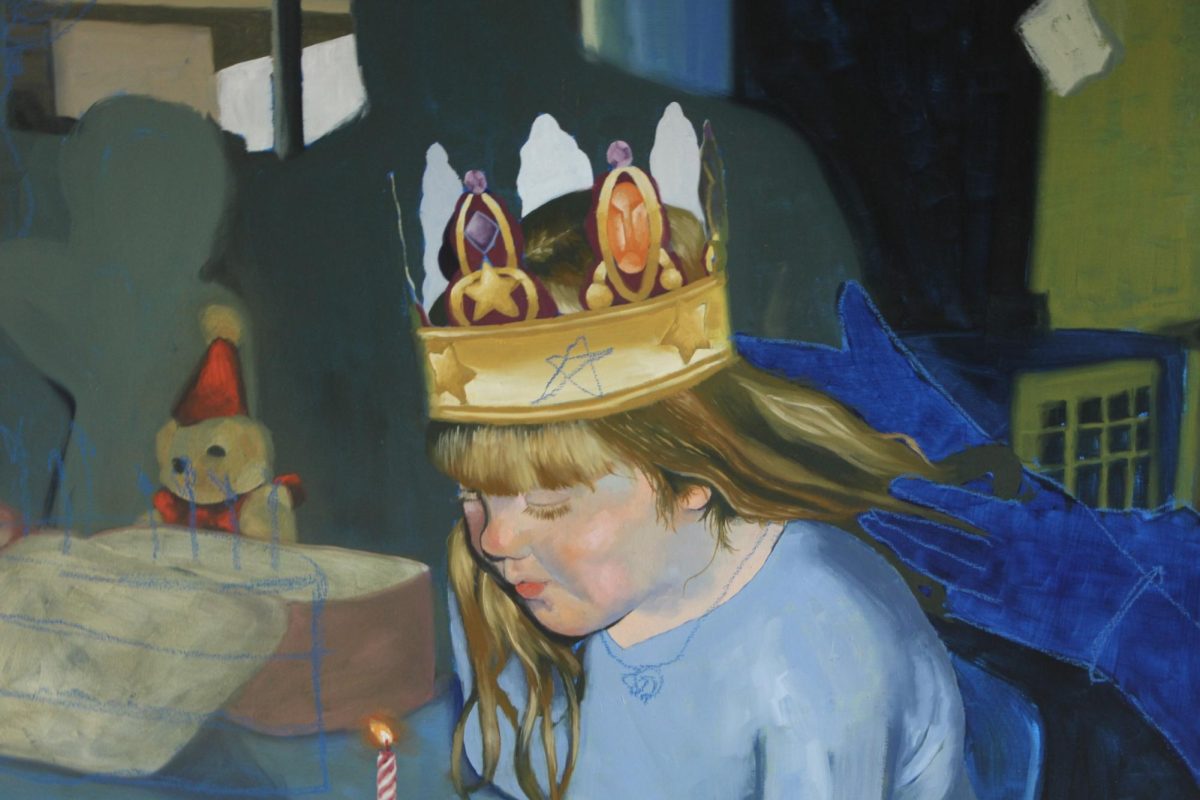
Pearson’s reclamation of self has thrust her artwork into the online stratosphere, where strangers transfigure into fans and patrons in an instant. While Pearson’s husband is their household’s primary breadwinner, the income she makes from selling prints of her artwork “means [they] don’t have to shop too carefully at the grocery store.” The response to her work from online audiences has also brought Pearson a measure of frustration.
“The only comments that genuinely bother me are the ones where people are speculating what my trauma was. You tell me what you think the painting means, even if it is so wrong in my eyes, tell me what it means to you,” Pearson noted. “But a lot of people come into my comments and say ‘What does this mean?’ and other people will respond and say ‘Oh, she was sexually abused, she grew up poor.’ What?! You do not know me, where did you get this information?”
Navigating the online presence of her art is about give and take for Pearson. On some days it’s safe to venture into the social media wilderness, while on other days, the artist prefers to retreat to the solace of her studio, the comforting, acrid smell of paint thinner and her adoring pets.
“I can forget about how many people are looking at me for a while, and then all of a sudden it’s like a slap in the face,” she said.
In her ‘real life,’ Pearson is preparing for her first solo show, a gallery at ArtsWorcester set to open on May 9 and run until June 16, 2024. She’s painting her newest piece, a family memory from Halloween of 2003, on a tattered old canvas she’s patched up with two rectangular swatches from a newer canvas. Her practice of painting feelings over scratchy, not-all-there recollections is reminiscent of the ridges and cracks in the asphalt near her home, paved over but visible. She lays her trauma bare for the viewer’s interpretation, for their consumption online, but each painting is most cathartic for Pearson herself. She paints so she can drive on the jagged roads of memory again.
Pearson makes the work she makes because “[her] soul wants [her] to make it.”


![Worcester, MA — Pearson’s recent piece “Lipstick on a Pig” contends with her self-perception. The title of the painting came to her first, “fixating in [her] head quite a lot,” Pearson said.](https://thescopeboston.org/wp-content/uploads/2024/03/2-1200x800.jpg)
